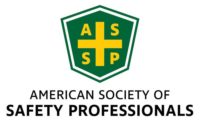ISHN engages Jim Frederick, assistant director of health, safety and environment department, United Steelworkers
Can OSHA survive annual budget cuts of 8% as projected in the cliff scenario?
Like any organization, budget cuts at OSHA will be difficult. Cuts to OSHA are likely to have a disproportionate effect on workers in small workplaces, workers with English as a second language and non-union workers. All workers have the right to a safe workplace and OSHA’s job is to make certain that workplaces are safe from recognized hazards. With a reduced budget it will be more difficult to provide enforcement especially to the populations at higher risk. With a reduced budget it will be more difficult to set new standards and work through the many steps in the OSHA rulemaking process. Perhaps a good cost savings effort would be to legislatively address the many steps in the OSHA rulemaking process and streamline the efforts to provide healthy and safe workplaces. OSHA’s survival is not an option, it is a necessity. OSHA’s survival is a necessity for workers in all work places and OSHA must remain a vital part of the overall health and safety programs in our workplaces.
Would a surviving OSHA be restricted to compliance assistance and targeted enforcement, with not enough funding for standards-setting?
A priority for OSHA must be enforcement regardless of budget. Many employers work diligently to comply and in many cases exceed the OSHA requirements. Complying with OSHA standards is a vital part of an overall health and safety program. The key is preventing injury and illness. The recipe is to comply and go well beyond OSHA standards to do that.
Enforcement of the OSHAct and their regulations provides a fair and level playing ground for all employers and ensures that those who choose not to comply will be identified and held accountable for their violation of their legal requirements.
Another priority for OSHA is an appropriate rulemaking process. Many workplace health and safety hazards are preventable and OSHA standards are vital in the control of these hazards. Injury prevention programs, combustible dust, silica and beryllium are just a few examples of areas of priority that OSHA needs to focus on in the coming months. We look forward to the rulemaking process at OSHA to continue regardless of budget issues.
Are we seeing the sun set on OSHA as we know it?
No! The importance of worker safety and the agency charged to protect it is seen again and again. It is seen in the many workplace fatalities that occur each and every day in US workplaces. It is seen in the myriad of sick workers and former workers who suffer from preventable work related illness. It is seen in small businesses and the largest corporations each time an unsafe condition is found and (hopefully) controlled in the workplace. OSHA is not an option, it is a life and limb saving necessity. As a society, worker health and safety must be a high priority and we need to recognize the value that OSHA provides to workers and employers alike.
Will the next generation of EHS pros be dealing with an OSHA very different from the one in the ‘70s and ‘80s that shaped the careers of so many baby boomer EHS pros?
My experience is that OSHA today is not the same as it was 20 years ago. I assume that OSHA of today or OSHA of 20 years ago is not the same as OSHA of 40 years ago. There are countless factors that make workplaces different today than they were 20 or 40 years ago. I have no reason to believe that OSHA will not continue to adapt and evolve as the needs of workplace health and safety continue to change.


